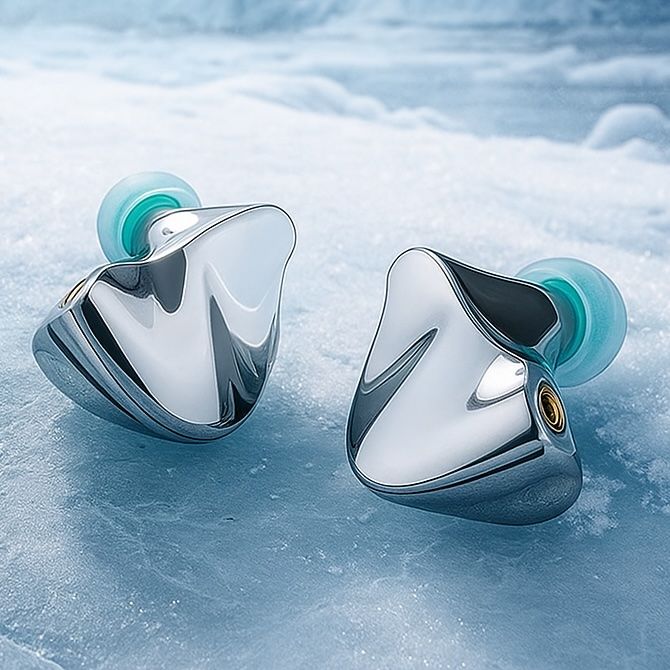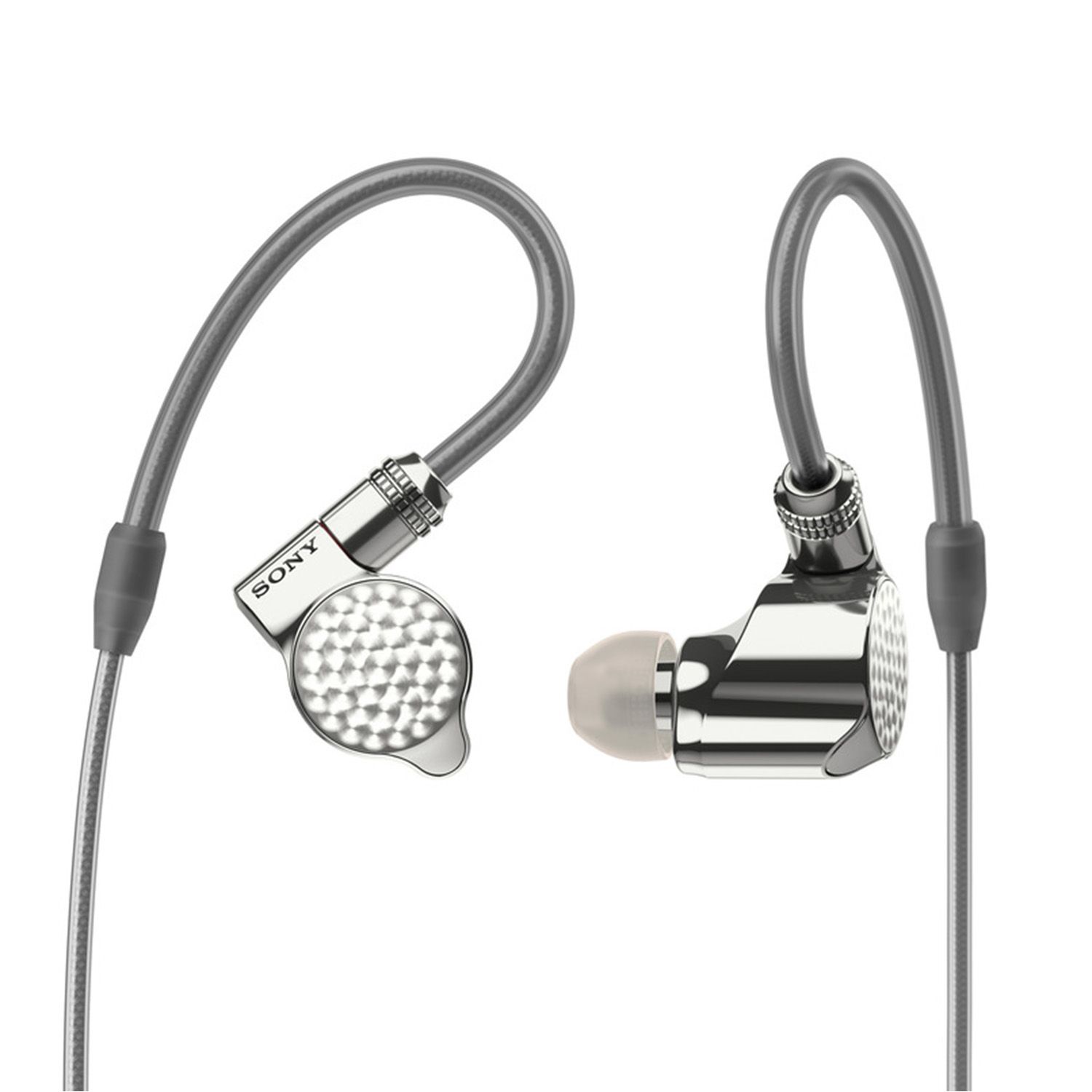Glaciervs.IER-Z1R
Sound & Specs Comparison
Information
Both IEMs are widely regarded in the audiophile community. See how they differ in terms of sub-bass response, upper mids, clarity, and overall tonality. Spider charts and rating breakdowns included.
Objective Comparison
Facts, details, stuff.
| General Info | Glacier | IER-Z1R |
|---|---|---|
| Brand | DUNU | Sony |
| Country | China | – |
| IEM Description | A powerful flagship 9‑driver tribrid IEM delivering impactful sub‑bass, detailed mids, and airy treble. Encased in mirror‑finished 904L stainless steel with DLC coating and equipped with a modular premium cable—built for both refinement and performance. | Despite their small size, the Sony IER-Z1R earphones feature a sophisticated 3-way design with two dynamic drivers and a highly precise balanced armature. The sound quality is not just high-resolution—it's ultra-high-resolution, reaching an impressive frequency response of up to 100 kHz. Housed in a precisely crafted, virtually resonance-free aluminum shell, the design ensures that all three drivers remain in perfect phase alignment. The cables are fully balanced and made from high-purity OFC copper with silver plating for maximum detail retrieval. |
| Price Level | 1.000 – 2.000 | 2.000 + |
| Housing & Driver | ||
|---|---|---|
| Driver Config | Tribrid | Hybrid |
| Driver Types | Electrostatic + Dynamic Driver + Balanced Armature | Dynamic Driver + Balanced Armature |
| Shell Material | 904L stainless steel with diamond-like carbon mirror finish | – |
| Cable | 8‑core monocrystalline copper with triple-layer insulation; white cloth sleeving | – |
| Technical | ||
|---|---|---|
| Freq Range | 5 Hz – 40 kHz | 3-100.000 Hz |
| Impedance (Ω) | 43 | – |
| Sensitivity (dB) | 109 | 103 |
| Crossover | Dual four‑way frequency crossover with acoustic/electronic control | – |
| Platform Info | ||
|---|---|---|
| Comments | 2 | 0 |
| Visit Count | 219 | 95 |
| External Reviews | 1 | 1 |
Meta Ratings
Sound-wise, IER-Z1R provides a measurably more refined presentation, with improved detail retrieval, microdynamics, and instrument layering when compared to Glacier (9.8 vs 8.2). For comfort fit, Glacier performs noticeably better (8.2 vs 6.8). Users may find the IER-Z1R cable slightly more confidence-inspiring for both daily use and long-term durability.
| Glacier | IER-Z1R | |
|---|---|---|
| Sound | 8.2 | 9.8 |
| Comfort Fit | 8.2 | 6.8 |
| Build Quality | 9.7 | 9.8 |
| Stock Cable | 8.0 | 8.5 |
| Accessories | 8.5 | 8.3 |
Sound Characteristics
IER-Z1R produces sub-bass that is m more textured and present in cinematic or bass-heavy tracks (9 vs 7.5). It offers a stronger and more impactful bass response, adding weight and presence where Glacier feels less assertive (9 vs 7.5). It translates bass vibrations into a a more visceral experience, while Glacier lacks this tactile feedback (9 vs 8). It renders lower mids a more naturally, giving male vocals and instruments a fuller tone than Glacier (8.5 vs 7). Upper mids are a more resolving and expressive on It, revealing emotion and articulation better than Glacier (8.5 vs 7.3). It provides m more refined lower treble, resolving fine detail and air with greater finesse than Glacier (9 vs 7.5). The upper treble of It extends m further, offering more sparkle and openness than Glacier (9.5 vs 8). It paints a a broader sonic landscape, offering better instrument positioning across the stage (10 vs 8.5). It retrieves micro-details b more effectively, revealing nuances that are less apparent in Glacier (9.5 vs 9). Track elements feel d more isolated and clean on It, offering clearer focus than Glacier (9.5 vs 8). Instruments remain intelligible on It even during busy sections, showing d better handling of masking than Glacier (9 vs 7.5). Notes on It feel a more grounded and weighty, whereas Glacier can sound thin or hollow (9 vs 6). It hits with s more authority during transients, creating a more explosive effect than Glacier (9 vs 7.5). The upper range of vocals is a cleaner and more forgiving on It, helping it avoid sibilant harshness that Glacier shows (9.5 vs 8.5). It presents instrument timbre with a more natural coloration, giving a realistic tone that Glacier lacks (9.5 vs 7.5). Tonality on It is a more coherent and refined, yielding a more pleasing overall signature than Glacier (9 vs 7). Subtle ridges and granularity are conveyed m more clearly on It, adding life that Glacier doesn’t quite match (9 vs 7.5).
| Glacier | IER-Z1R | |
|---|---|---|
| Sub Bass | 7.5 | 9.0 |
| Bass | 7.5 | 9.0 |
| Bass Feel | 8.0 | 9.0 |
| Lower Mids | 7.0 | 8.5 |
| Upper Mids | 7.3 | 8.5 |
| Lower Treble | 7.5 | 9.0 |
| Upper Treble | 8.0 | 9.5 |
| Sound Stage Width | 8.5 | 10.0 |
| Detail | 9.0 | 9.5 |
| Layering | 8.0 | 9.5 |
| Masking | 7.5 | 9.0 |
| Note Weight | 6.0 | 9.0 |
| Slam | 7.5 | 9.0 |
| Sibilance | 8.5 | 9.5 |
| Timbre Color | 7.5 | 9.5 |
| Tonality | 7.0 | 9.0 |
| Texture | 7.5 | 9.0 |
Tonal Signature
// Nothing to compare yet.

